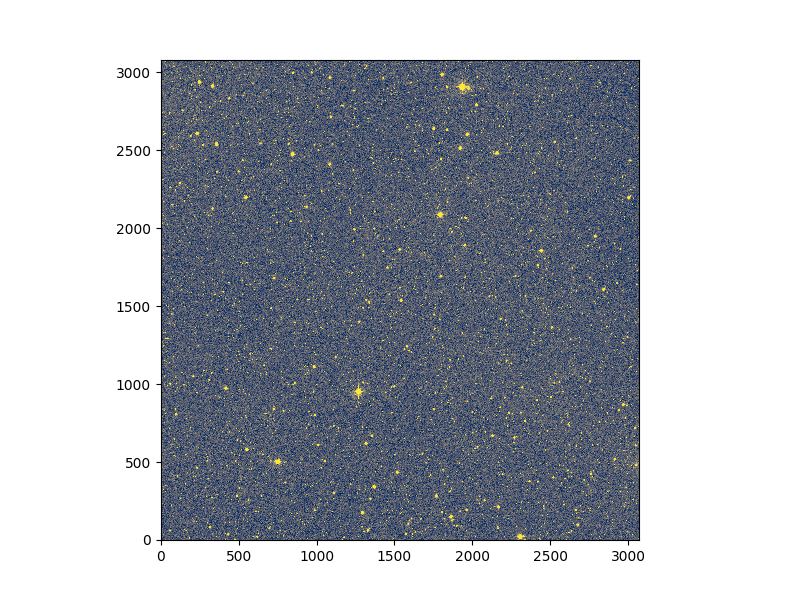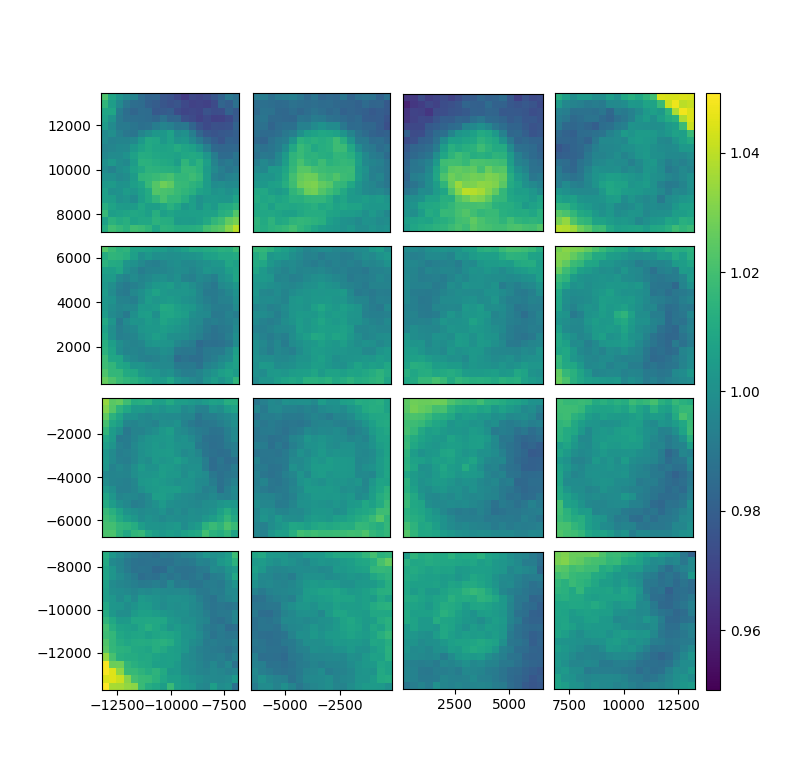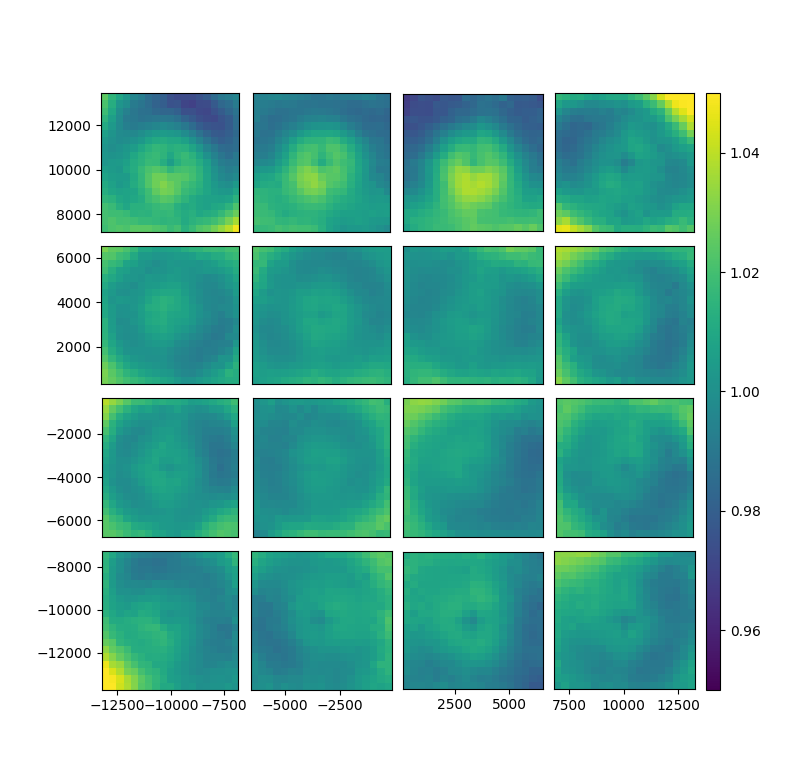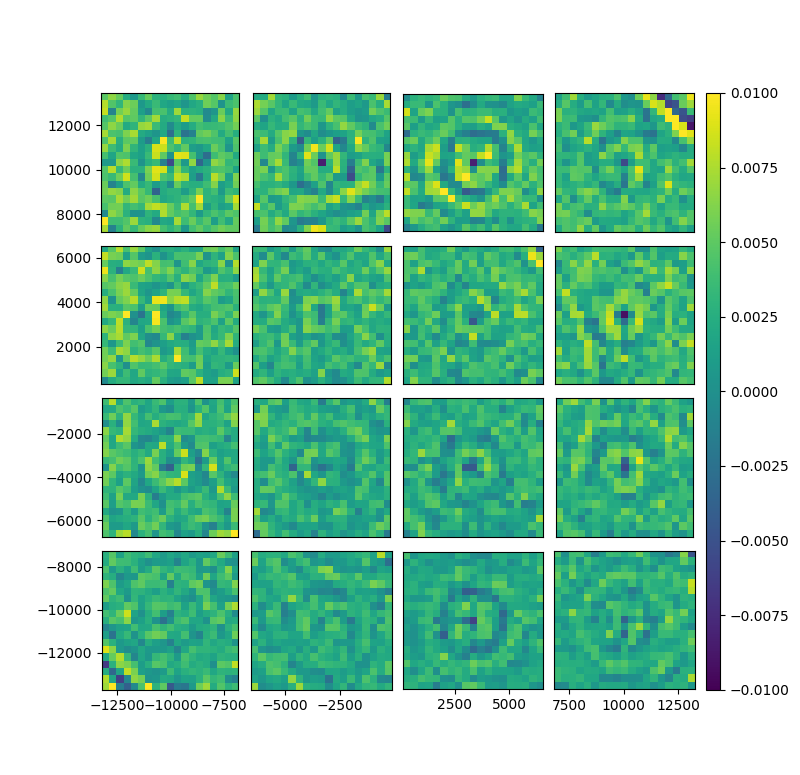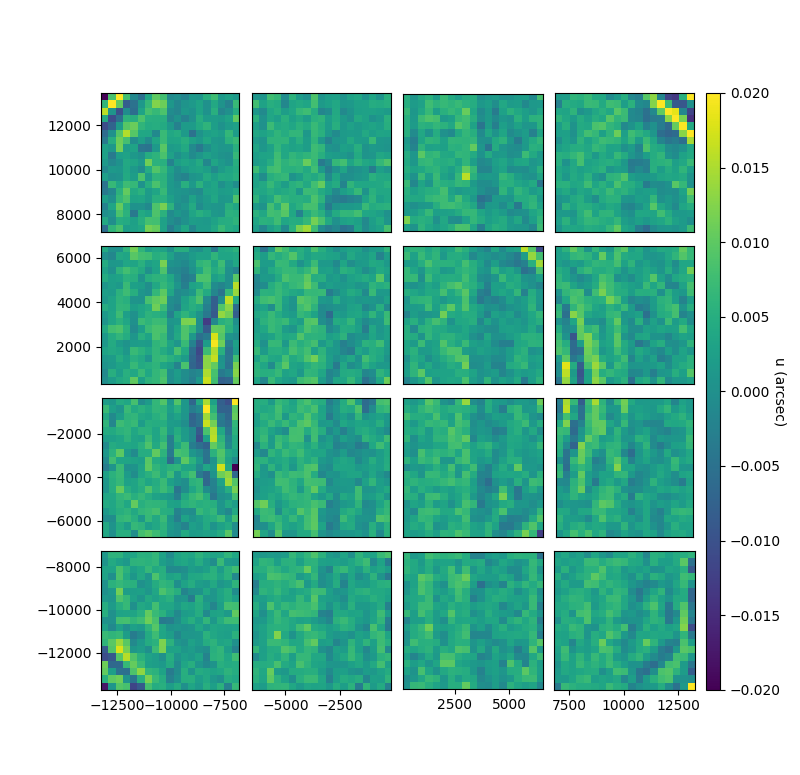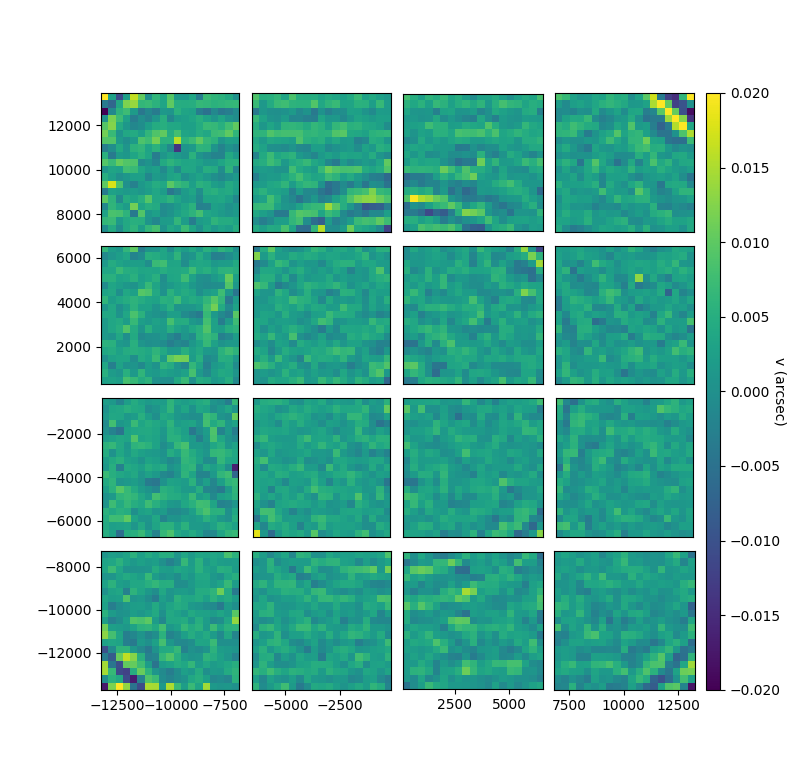** Ziff is a wrapper to use Piff on ZTF images **
M. Rigault (m.rigault@ipnl.in2p3.fr, CNRS/IN2P3), R. Graziani (r.graziani@clermont.in2p3.fr, CNRS/IN2P3)
You first need Piff:
git clone https://github.com/rmjarvis/Piff.git
cd Piff
python setup.py install(Requirements galsim, treecorr, available @ https://github.com/rmjarvis, together with latest version of Piff)
if you have this issue:error: Setup script exited with error: Could not find PyBind11, do:
cd to your anaconda3/include
ln -s python3.7m/pybind11
see (rmjarvis/Piff#92)
See TreeCorr
conda update -c conda-forge treecorr
See GalSim. It seems to be an issue with conda installation, but try :
conda install -c conda-forge galsim
Safe way :
git clone https://github.com/GalSim-developers/GalSim.git
cd GalSim
git checkout main
git pull
python setup.py install
And ztfquery, ztfimg (available @ https://github.com/MickaelRigault)
Then,
git clone https://github.com/rgraz/ziff.git
cd ziff
python setup.py installChoose an image, for example ztf_20190917468333_000698_zi_c03_o_q2_sciimg.fits. And instanciate Ziff.
from ziff.ziff import Ziff
z = Ziff( `ztf_20190917468333_000698_zi_c03_o_q2_sciimg.fits`, mskimg = None )
z.get_ztfimg()[0].show()If no mskimg is given, ziff will look for one using the sciimg prefix. It also builds on the fly standard catalogs to calibrate PSF from gaia online catalogs. These are accessible through the attribute z.catalog.
Default PSF configuration input to piff is given in ziff/data/default_config.json file and is accessible through attribute z.config.
It can be changed the following way:
z.set_config_value('i/o,nstars',2000) # In general we only have ~200 calibrators / quadrant
z.set_config_value('psf,interp,order',4)
z.set_config_value('psf,outliers,max_remove',20)The PSF fit itself is done by using run_piff method to a catalog or catalog name.
z.run_piff('gaia_calibration',overwrite_cat=True)The Piff psf is stored in z.psf. Note that if you don't run piff but try to call z.psf, then it will look in the sciimg's path to check if piff already ran and load the psf if possible.
To then check the results, you can compute residuals to a given star catalog, here the default one named gaia_full which was automatically created.
z.set_config_value('i/o,nstars', 10000)
# Loading the catalog as Piff Stars object
stars = z.make_stars('gaia_full', overwrite_cat=True)
# Measuring flux and centroid of stars. Right now, you should put which = 'minuit' if fit_center=True
new_stars = z.reflux_stars(stars,fit_center=False, which = 'piff')
# Computing the residuals
residuals = z.compute_residuals(new_stars,normed=True,sky=200)
# Computing shape properties of stars : Size, T, g1, g2 and of the modeled stars
shapes = z.compute_shapes(new_stars)Example of plots:
- Ploting residuals
import numpy as np
import matplotlib.pyplot as plt
fig, axes = plt.subplots(1,3,figsize=(13,3))
im_kwargs = {'origin':'lower', 'vmin' : -0.1, 'vmax': 0.1}
i = axes[0].imshow(residuals[0].T, **im_kwargs)
axes[0].set_title('Flux residualsiduals to one star')
fig.colorbar(i,ax=axes[0])
im_kwargs = {'origin':'lower', 'vmin' : -0.05, 'vmax': 0.05}
axes[1].set_title('Mean flux residualsiduals')
i = axes[1].imshow(np.mean(residuals,axis=0).T, **im_kwargs)
fig.colorbar(i,ax=axes[1])
axes[2].set_title('Median flux residualsiduals')
i = axes[2].imshow(np.median(residuals,axis=0).T, **im_kwargs)
fig.colorbar(i,ax=axes[2])Ploting shapes
fig, axes = plt.subplots(1,3,figsize=(12,3))
scat_kwargs = {'cmap':'RdBu_r', 's':50}
s = axes[0].scatter(shapes['u'],shapes['v'],c=np.asarray(shapes['T_data_normalized']),vmin=0.9,vmax=1.1,**scat_kwargs)
axes[0].set_title('T (data) (normalized)')
fig.colorbar(s,ax=axes[0])
s = axes[1].scatter(shapes['u'],shapes['v'],c=np.asarray(shapes['T_model_normalized']),vmin=0.9,vmax=1.1,**scat_kwargs)
fig.colorbar(s,ax=axes[1])
axes[0].set_title('T (model) (normalized)')
s = axes[2].scatter(shapes['u'],shapes['v'],c=np.asarray(shapes['T_data'])-np.asarray(shapes['T_model']),vmin=-0.05,vmax=0.05,**scat_kwargs)
fig.colorbar(s,ax=axes[2])
axes[0].set_title('T residuals (arcsec)')Piff is able to handle multiple images to fit a PSF model over an entire ccd or event the entire focal plane. This is managed by ziff as you can input a set of images. Let's assume we want to fit over a CCD, the commands stay the same.
imgs = ['ztf_20190301483877_000579_zg_c07_o_q{}_sciimg.fits'.format(i+1) for i in range(4)]
z = ziff.ziff.Ziff(imgs,logger=logger,load_default_cat= True, build_default_cat = True)
z.set_config_value('i/o,nstars',1000)
z.set_config_value('psf,interp,order',4)
z.set_config_value('psf,outliers,max_remove',20)
z.run_piff('gaia_calibration',overwrite_cat=True)This fit the psf. Then to check the results, again:
z.set_config_value('i/o,nstars',10000)
stars = z.make_stars('gaia_full',overwrite_cat=True)
new_stars = z.reflux_stars(stars,fit_center=True, which = 'minuit')
res = z.compute_residuals(new_stars,normed=True,sky=200)
shapes = z.compute_shapes(new_stars)ZiffCollection is a class that handles multiple ziffs objects, in order to fit a bunch of images.
A useful way to use ZiffCollection is to load it from a ztfquery object and group the images by any key you want. In the following examples, ZiffCollection will load a list of Ziff objects grouped by filefracday and ccdid:
from ztfquery import query
from ziff.ziff import ZiffCollection
zquery = query.ZTFQuery()
z = ziff.ziff.ZiffCollection.from_zquery(zquery,groupby=['filefracday','ccdid'])All Ziff object are stored in z.ziffs.
To eval a function over all ziffs object, you can use eval_func or eval_func_stars :
#FIT
z.eval_func('set_config_value',key_path = 'i/o,nstars',value=2000)
z.eval_func('set_config_value',key_path = 'psf,interp,order',value=4)
z.eval_func('set_config_value',key_path = 'psf,outliers,max_remove',value=20)
z.eval_func('run_piff',catalog='gaia_calibration',overwrite_cat = True)
#RESULTS
z.eval_func('set_config_value',key_path = 'i/o,nstars',value=2000)
stars = z.eval_func('make_stars',catalog='gaia_full')
new_stars = z.eval_func_stars('reflux_stars',stars_list = stars, fit_center=False, which = 'piff')
res = z.eval_func_stars('compute_residuals',stars_list = new_stars)
shapes = z.eval_func_stars('compute_shapes',stars)BinnedStatistic is a class to handle shapes measurements of a psf model on several exposures and CCDs.
Let's suppose you have computed the shapes of many stars using a ZiffCollection object:
from ztfquery import query
zquery = query.ZTFQuery()
zquery.load_metadata(sql_query = "fid=1 and (obsjd BETWEEN 2458743.9 AND 2458744)" )
from ziff.ziff import ZiffCollection
z = ziff.ziff.ZiffCollection.from_zquery(zquery, groupby=['ccdid','filefracday'], build_default_cat = False, load_default_cat = False, save_cat = False)
# You need to have run all psf and shapes of all ziffs in z.ziffs
shapes = z.read_shapes() #Read all computed shapes
#Needs to compute the residuals firs
shapes['resT'] = shapes['T_model'] - shapes['T_data']Then you can analyze the results with BinnedStatistic. BinnedStatistic can make statistical plot over bins, for exemple per ccd or per fracday:
from ziff.stats import BinnedStatistic
bs = BinnedStatistic(shapes,groupby=['ccd'])
# Some filters of the data
bs.add_filter('RPmag',[12,18])
bs.add_filter('colormag',[-5,5])
fig, gs = bs.show_focal_plane('T_data', norm_key = 'T_data',norm_stat='median', norm_groupby=['ccd','fracday'])
fig, gs = bs.show_focal_plane('T_model', norm_key = 'T_data')
fig, gs = bs.show_focal_plane('resT')
And same for the astrometry:
kw = {'vmin':-0.02,'vmax':0.02}
fig, gs = bs.show_focal_plane('center_u', statistic='median', imshow_kwargs=kw, label='u (arcsec)')
fig, gs = bs.show_focal_plane('center_v', statistic='median', imshow_kwargs=kw, label='u (arcsec)')But if you want to check the first exposure for instance:
bs = BinnedStatistic(shapes, groupby=['fracday'])
group = bs.groups[0]
fig, ax = bs.scatter_plot_group(group, 'T_data', s=5,vmin=1.05,vmax=1.25)